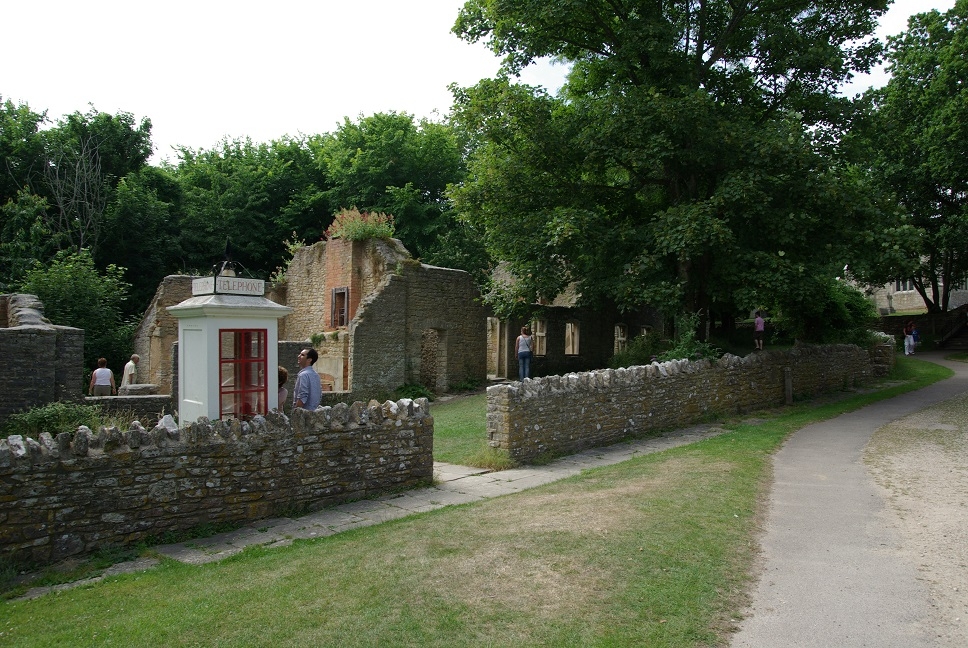We’d heard the guns practicing on the Lulworth Army Ranges, and we’d driven around the perimeter many times but we had never ventured onto the Ranges themselves. We fixed this with a recent visit to the ‘lost’ village of Tyneham.
The Firing Ranges are safe and open to the public during school holidays and on most weekends during the year. From Dorchester, they are approached via Lulworth. On entering, and driving up to the central ridge, our first thoughts were that the Ministry of Defence didn’t pick just any old scruffy piece of countryside for their training manoeuvres. Instead, this is prime landscape. The Ranges are breathtakingly beautiful, as stunning as any National Park. The first port of call has to be the viewpoint on Povington Hill, the central ridge. From here, the views are just endless in every direction. Out to sea towards the Isle of Wight, and inland over a vast sweeping panorama of heath and woodland and onwards over the Harbour to Poole and Bournemouth.
The remains of the village of Tyneham are also visible below, in the valley which runs down towards Worbarrow Bay and the sea. The joy of the landscape dissipates a little when you realise the story behind this view. All 109 properties in the valley below were requisitioned by the MOD in 1943 to allow the Lulworth Ranges to be created. This was the bleakest time of the war, and you can sort of understand that the training grounds were required and had to be somewhere. At the time, the Government promised to return the land at the war’s end. However, over 70 years later, this has never happened, and the villagers were never allowed to return.
There is a single track road which drops down from the ridge to a car park just outside the ruined village. For over 30 years, until the 1970s, the village was left to deteriorate as nature took over, with no public access at all. A growing public reaction eventually persuaded the MOD to begin opening up the Ranges and to at least make the buildings safe for visitors. Most of the former cottages and the post office are now half-ruined shells, although in more recent years notices have been posted in each building with photos in memory of the former residents. This part of the village reminded us, on a hugely smaller scale, of a visit to the ruins of Pompeii, another place left empty in very poignant circumstances.

In response to further public pressure, the MOD has made more extensive renovation efforts on the school and church, which have both been structurally restored, made watertight, and furnished as they might have been in 1943. This is where the story of the village is told, with a number of exhibits and storyboards around the walls. It is here that you find out that the villagers were all tenants, and received no compensation other than the value of the produce in their gardens at the time of evacuation. Although the landowner, the Squire of Tyneham, was compensated, he was never reconciled to the broken promise to allow the villagers to return before his death in 1956.
There is a small cemetery around the church, and we noticed a number of relatively recent graves. It seems that some of the villagers have been allowed to return in death where they were never allowed to return in life. This hardly atones for past wrongs, but does seem to be just about the only thing the British Government has got right in this sorry story.
There is a notice in the church which tries to justify the continued Army occupation of the village on the grounds that the valley has been spared the “disfiguring tourist development of nearby resorts”. We’ve endlessly searched the adjacent bays of Lulworth and Kimmeridge but, apart from the occasional visitor centre and small hotel, we can find no sign of “disfigurement”! What has been created, however, is a poignant visitor attraction, and a thought-provoking experience which makes you realise how much the relationship between state and people has changed, for the better, in just the last couple of generations. And the setting is undoubtedly splendid: peaceful and gorgeously beautiful. Well worth visiting.
Lulworth Army Ranges and Tyneham Village are a half hour drive from Aquila Heights.